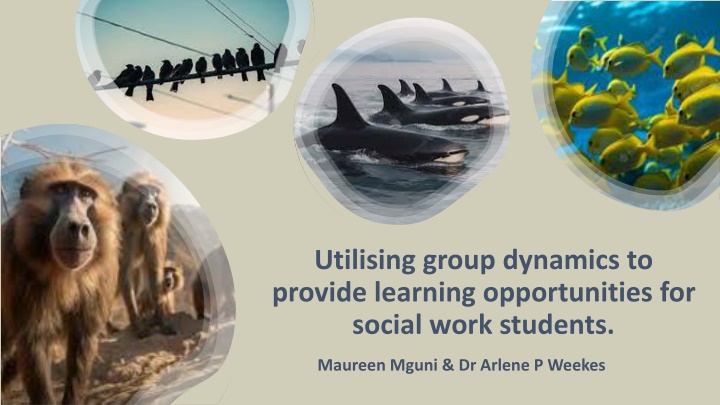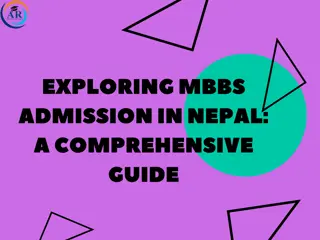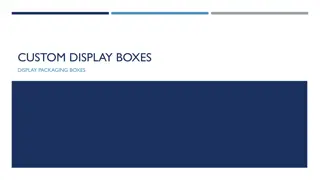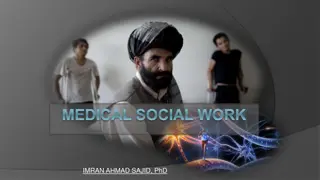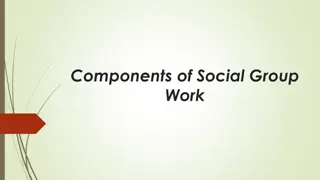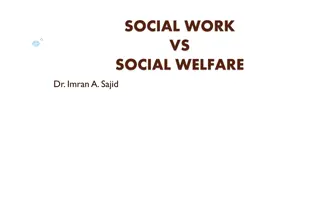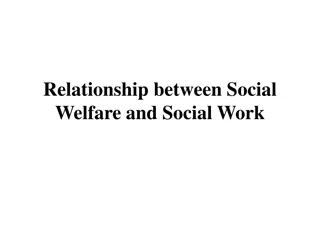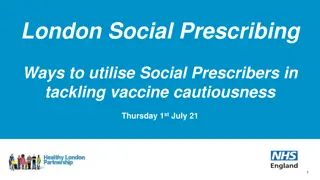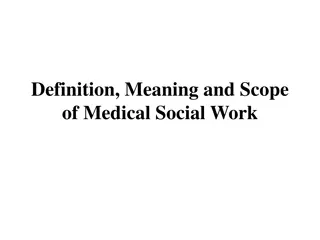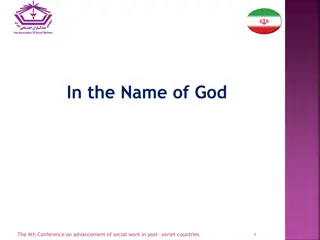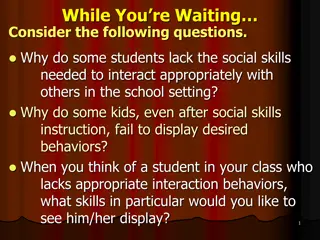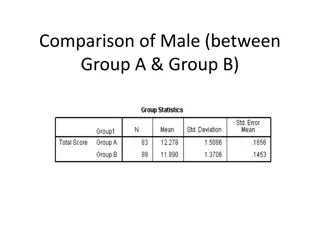Utilising Group Dynamics for Social Work Students
Group dynamics provide learning opportunities for social work students through activities such as think-pair-share, triads, jigsaw, and class debates. These interactive methods enhance student engagement, promote participation, and foster a deeper understanding of diverse perspectives, human rights, and ethical practices in social work education.
Uploaded on Apr 04, 2025 | 1 Views
Download Presentation

Please find below an Image/Link to download the presentation.
The content on the website is provided AS IS for your information and personal use only. It may not be sold, licensed, or shared on other websites without obtaining consent from the author.If you encounter any issues during the download, it is possible that the publisher has removed the file from their server.
You are allowed to download the files provided on this website for personal or commercial use, subject to the condition that they are used lawfully. All files are the property of their respective owners.
The content on the website is provided AS IS for your information and personal use only. It may not be sold, licensed, or shared on other websites without obtaining consent from the author.
E N D
Presentation Transcript
Utilising group dynamics to provide learning opportunities for social work students. Maureen Mguni & Dr Arlene P Weekes
Groupwork in action Groupwork in action No. of students Type of group Activity Lecture/Module 2 Dyads/pairs Think, Pair & Share Contemporary Social Work 3 Triads/trios Reflective Triads Adult Social Work Understanding Diversity & Human Rights 4 Tetrads/quartets Problem Based Learning Practice Education Professional Standards (CPD) Social Work Law 5 Quintet or Sextet/heads Jigsaw Understanding Diversity & Human Rights 43 Whole class Debate Ethics and Human Rights
Activity Think pair share research. Think-pair-share (TPS) is a collaborative learning strategy where students work together to solve a problem or answer a question about an assigned reading. Think-Pair-Share-template.pdf (readingrockets.org) https://www.pinterest.co.uk/pin/talking--452189618829239607/
Triads Reporter Presenter Enabler Adapted from Brockbank and McGill 2007
J J i i g g s s a a w w https://strategiesforspecialinterventions.weebly.com/jigsaw1.html https://www.readingrockets.org/strategies/jigsaw http://www.cultofpedagogy.com/
Class Debate In pairs Identify the main point for and against. In groups of fours - Produce the two strongest arguments you have. - Consider the arguments that the other side are going to produce and prepare to argue against them. The two groups to debate the for and against
Impact on students Take-away for academics I called Arlene for some guidance because I had put together a peer learning discussion and wanted those that were joining to engage with the topic in a more active way than just having a conversation. Arlene always has my peers and I doing different activities while in lectures so I thought she would be the best person to ask for help. After explaining my topic and how I wanted to structure the session, Arlene suggested Think-Pair- Share. Although my group was small, it was a great activity and suited the session s topic well. The activity helped the group become more engaged and promoted participation amongst the entire group. Without the help of Arlene, the session may have not gone so well (Level 6 student feedback). Anti-Discriminatory Practice Regulatory body standards Communication Thank you for incorporating groupwork into our learning Maureen. I enjoyed doing the research with my group and having to present back to all the other students. It was good to hear from my colleagues too- we are all facing similar challenges. I am not normally keen on presenting but I found this way of learning very enjoyable and effective (PEPs student). Multi-agency working Higher level learning
